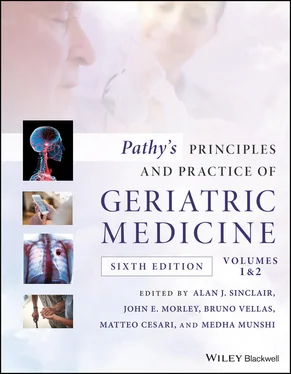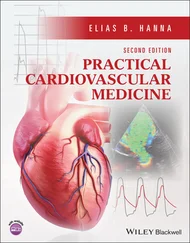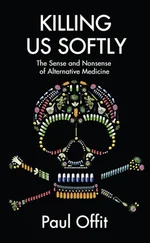Pathy's Principles and Practice of Geriatric Medicine
Здесь есть возможность читать онлайн «Pathy's Principles and Practice of Geriatric Medicine» — ознакомительный отрывок электронной книги совершенно бесплатно, а после прочтения отрывка купить полную версию. В некоторых случаях можно слушать аудио, скачать через торрент в формате fb2 и присутствует краткое содержание. Жанр: unrecognised, на английском языке. Описание произведения, (предисловие) а так же отзывы посетителей доступны на портале библиотеки ЛибКат.
- Название:Pathy's Principles and Practice of Geriatric Medicine
- Автор:
- Жанр:
- Год:неизвестен
- ISBN:нет данных
- Рейтинг книги:3 / 5. Голосов: 1
-
Избранное:Добавить в избранное
- Отзывы:
-
Ваша оценка:
- 60
- 1
- 2
- 3
- 4
- 5
Pathy's Principles and Practice of Geriatric Medicine: краткое содержание, описание и аннотация
Предлагаем к чтению аннотацию, описание, краткое содержание или предисловие (зависит от того, что написал сам автор книги «Pathy's Principles and Practice of Geriatric Medicine»). Если вы не нашли необходимую информацию о книге — напишите в комментариях, мы постараемся отыскать её.
Pathy’s Principles and Practice of Geriatric Medicine
Pathy's Principles and Practice of Geriatric Medicine — читать онлайн ознакомительный отрывок
Ниже представлен текст книги, разбитый по страницам. Система сохранения места последней прочитанной страницы, позволяет с удобством читать онлайн бесплатно книгу «Pathy's Principles and Practice of Geriatric Medicine», без необходимости каждый раз заново искать на чём Вы остановились. Поставьте закладку, и сможете в любой момент перейти на страницу, на которой закончили чтение.
Интервал:
Закладка:
63 63. Ma JZ, Ebben J, Xia H, et al. Hematocrit level and associated mortality in hemodialysis patients. J Am Soc Nephrol. 1999; 10:610‐9.
64 64. Moreno F, Sanz‐Guajardo D, Lopez‐Gomez, JM, et al. Increasing the hematocrit has a beneficial effect on quality of life and is safe in selected hemodialysis patients: Spanish Cooperative Renal Patients Quality of Life Study Group of the Spanish Society of Nephrology. J Am Soc Nephrol. 2000: 11:335‐42.
65 65. Besarab A, Ayyoub F. Anemia in renal disease: Diseases of the Kidney and Urinary Tract, 8th ed. Lippincott Williams and Wilkins; 2007:2406–2430.
66 66. Hunsicker L, Levey A. Progression of chronic renal disease: mechanisms, risk factors, and testing of interventions. The Principles and Practice of Nephrology. Mosby; 1995:622‐31.
67 67. Anapalahan M, Savvas S, Lo K, et al. Chronic idiopathic normocytic anaemia in older people: the risk factors and the role of age‐associated renal impairment. Aging Clin Exp Res. 2017; 29:147‐55.
68 68. Nielson O, Thayson J. Erythropoietin deficiency in acute renal failure. Lancet. 1989; 1:634‐5.
69 69. Cotes PM, Tam RC, Reed P, et al. An immunological cross‐reactant of erythropoietin in serum which may invalidate EPO radioimmunoassay. BR J Haematol. 1989; 73:265‐68.
70 70. NKF‐K/DOQI Clinical Practice Guidelines for anemia of chronic kidney disease: update 2000. Am J Kidney Dis. 2001: 37:Suppl 1:S182–S238.
71 71. Phrommintikul A, Haas SJ, Elsik M, et al. Mortality and target haemoglobin concentrations in anaemic patients with chronic kidney disease treated with erythropoietin: a meta‐analysis. Lancet. 2007; 369:381‐88.
72 72. KDOQI, National Kidney Foundation. KDOQI clinical practice guidelines and clinical practice recommendations for anemia in chronic kidney disease. Am J Kidney Dis. 2006; 47(5 Supple 3):S11‐145.
73 73. Bennett CL, Becker PS, Kraut EH et al. Intersecting guidelines: administering erythropoiesis‐stimulating agents to chronic kidney disease patients with cancer. Semin Dial. 2009; 22:1‐4.
CHAPTER 23 Disseminated intravascular coagulation
Kingsley K. Hampton
Royal Hallamshire Hospital, Sheffield, UK
Introduction
Disseminated intravascular coagulation (DIC) is a failure of haemostatic homeostasis ( Figure 23.1). The haemostatic system comprises five components: the coagulation cascade, the fibrinolytic cascade, platelets, the natural anticoagulant pathway, and vascular endothelial cells. It is a complex system that normally maintains blood fluidity when blood is confined within the intravascular vessels but can trigger rapid and localized coagulation if vascular integrity is breached. The intravascular space usually contains no exposed tissue factor, but all cells outside the vascular system express tissue factor in their cell membranes that initiates coagulation through the extrinsic pathway, as tissue factor binds to Factor VII and activates Factor X and hence the final common pathway of coagulation. In DIC, there is unregulated and uncontrolled activation of the coagulation cascade and platelets, leading to thrombotic occlusion of the microvascular capillaries and vessels and resulting in dysfunction of critical organs, such as acute kidney injury (AKI) and pulmonary dysfunction (ARDS). The consumption of coagulation factors and platelets by intravascular activation outpaces production, and the levels of coagulation factors and platelets fall. Simultaneously, there is activation of the fibrinolytic cascade, generating plasmin and resulting in fibrinogen degradation (high D‐dimers), together with depletion of components of the natural anticoagulant pathway (Antithrombin, Protein C, and Protein S) that contribute to systemic bleeding diathesis. 1,2Hence the paradox of DIC is that the clinical manifestations are of bleeding while the patient suffers morbidity and mortality due to organ damage due to microvascular thrombosis. The most common cause of DIC is sepsis, which occurs in 20–80% of severe cases and has a mortality of 20–50%. DIC usually has an acute onset with bleeding manifestations dominating the clinical picture; however, a chronic form can occur, the manifestations of which are very different, usually with presentation as recurrent thrombosis together with bruising, low platelets, and high D‐dimers. The management of this form of condition likewise differs.
Pathophysiology
DIC is a pathophysiological syndrome characterized by clinical manifestations of generalized bleeding together with laboratory features of severe coagulopathy. It is not a discrete pathological entity but a final common pathway for a variety of triggers and precipitating factors and can be initiated by a number of different mechanisms ( Table 23.1). DIC is characterized by great variation both between patients and within the same patient over time. It is a dynamic condition that will progress if untreated but can rapidly improve with appropriate treatment of the underlying cause. Recognition and treatment of the underlying cause are more important in treating DIC than support with haemostatic factors and platelets – giving more coagulation factors, fibrinogen, and platelets without treating the cause results in more substrate for uncontrolled coagulation and more microvascular thrombosis and end organ damage. Due to its severity and dynamic nature, it has been difficult to perform adequate randomized controlled trials in the management and treatment of DIC, although there have been several recent advances in its early diagnosis and treatment. 3
The primary triggers of DIC in the elderly are bacterial sepsis and malignancy, particularly disseminated malignancy. Other causes include massive trauma and major surgery. ABO‐incompatible blood transfusions, pancreatitis, and snake bites are rarer but recognized causes. DIC may be precipitated by activation of the coagulation cascade following tissue factor exposure, for example, as in massive trauma and major surgery; activation of the fibrinolytic cascade, e.g. the liberation of plasminogen activators by leukaemic blasts in acute promyelocytic leukaemia or carcinoma of the prostrate; or intravascular platelet activation, e.g. heparin‐induced thrombocytopenia, haemolytic uraemic syndrome, by endotoxins and endothelial cell activation in Gram‐negative sepsis and meningococcal septicaemia or by direct proteolytic cleavage of circulating haemostatic proteins, as occurs in pancreatitis and with some snake venoms ( Table 23.1). In addition to uncontrolled activation of and consumption of platelets and the coagulation cascade, there is depletion of the proteins of the natural anticoagulant pathway. Depletion of these further enhances the microvascular thrombosis and also leads to activation of the complement system, resulting in an inflammatory response and generation of vasoactive peptides, such as bradykinin. DIC also provokes a poorly characterized neuroendocrine response involving elevated catecholamines and glucocorticoids. 4
Clinically, DIC manifests as simultaneous bleeding and microvascular thrombosis leading to multiple organ dysfunction, including acute kidney injury (AKI), adult respiratory distress syndrome (ARDS), and hepatic and neurological dysfunction, and is often associated with fever, hypotension, lactic acidosis, hypoxia, and proteinuria. While bleeding is the most obvious and commonly recognized manifestation, death by bleeding is rare due to the use of blood and platelet transfusions in the treatment of hypovolaemia. The usual cause of death in DIC is multiorgan failure as a consequence of microvascular thrombosis, which is not immediately clinically apparent. Treatment of multiorgan failure, which is a consequence of anoxia and ischaemic necrosis of vital organs, is far more difficult to treat satisfactorily. 5
Читать дальшеИнтервал:
Закладка:
Похожие книги на «Pathy's Principles and Practice of Geriatric Medicine»
Представляем Вашему вниманию похожие книги на «Pathy's Principles and Practice of Geriatric Medicine» списком для выбора. Мы отобрали схожую по названию и смыслу литературу в надежде предоставить читателям больше вариантов отыскать новые, интересные, ещё непрочитанные произведения.
Обсуждение, отзывы о книге «Pathy's Principles and Practice of Geriatric Medicine» и просто собственные мнения читателей. Оставьте ваши комментарии, напишите, что Вы думаете о произведении, его смысле или главных героях. Укажите что конкретно понравилось, а что нет, и почему Вы так считаете.












